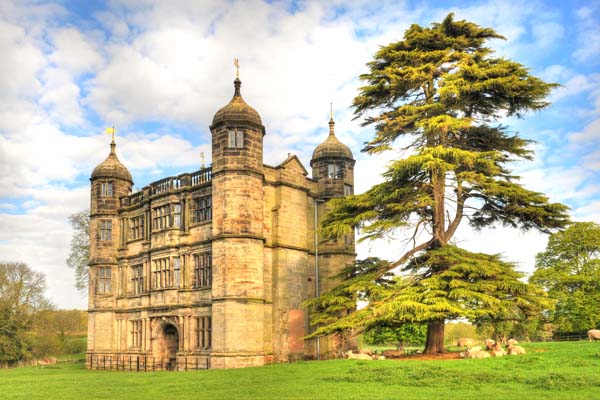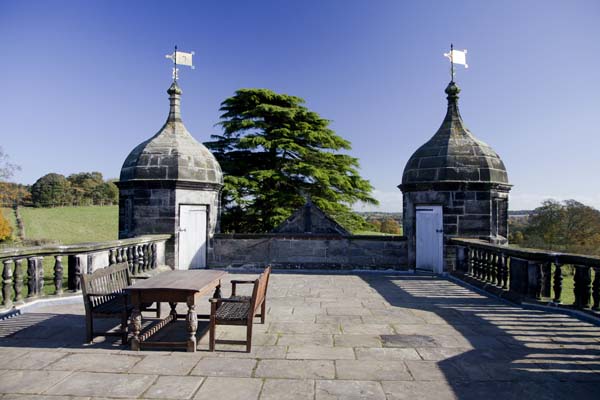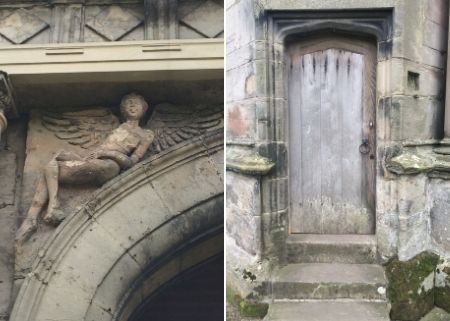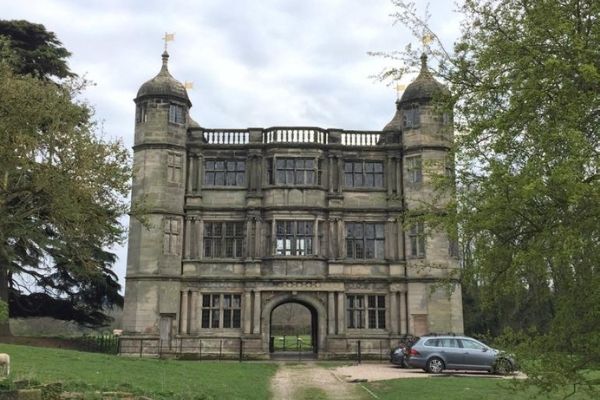Click on the media player below to listen to Liz reading her poem 'Tixall Gatehouse Angel'. You can also read the transcript of the poem here and her blog post below.

Before we came to Tixall Gatehouse we thought we knew her. A rare, eerie beauty, looking down upon the village and the canal below, the great Elizabethan mansion behind her fallen away to ruin, she looks like a palace from a fairytale or the beginning of a ghost story. We'd seen her at night, lit up like a lantern waiting for goodness knows who to arrive, and by day, light streaming straight through her high gothic windows as if everyone inside might have been struck asleep. Yet when we came to stay, with our heads full of imaginings, we discovered a very different kind of enchantment.
Tixall Gatehouse is one of those curious Midlands' treasures that still feels hidden from the rest of the world. Sat high upon Staffordshire fields she's a remarkable and uncanny sight: three stories of grey Tixall stone, with endless windows and four domed towers topped with gilt weather vanes. Carvings of voluptuous, languid angels - at once medieval and utterly modern - drape over the central arch, gorgeous and scornful, their wings the only angelic part of them. On the other side of the arch, brave armed warriors, their fighting limbs and weapons stolen by the rain and wind, gaze down upon the road and the canal below, demoted to keeping watch over passing tractors and noisy jostling lambs.

Built in 1580 by Sir Walter Aston, Tixall Gatehouse is testament to the Elizabethan passion for Classical designs. Described by Sampson Erdeswick in 1598 as "one of the fairest pieces of work made of late times in all these counties", she has seen the rise and fall, the plotting and scheming, the loves and losses, of many great families. Most famously, Mary Queen of Scots was imprisoned at Tixall Hall for two weeks in 1586 while her prison rooms at Chartley were searched and her secret papers seized. As she left Tixall, Mary is reported to have wept to the poor gathered at the gates, "I have nothing for you, I am a beggar as well as you, all is taken from me." There are now many portraits of Mary in the rooms at the Gatehouse, including a small sober print of her which looks down upon the beautiful bathtub in the turret bathroom, as if to remind bathers to gather their rosebuds whilst they may.

Over time, Tixall Hall was renovated, knocked-down, rebuilt and finally demolished. Yet as all around her changed and fell, the Gatehouse remained, although she too came dangerously close to dereliction, rescued by the Landmark Trust in 1968 as ‘an Elizabethan ruin, without roof, floors or windows, used as a shelter for cattle’. Oddly, I love to imagine her like that, as it makes the transformation that has taken place even more remarkable: Tixall Gatehouse as the Cinderella of the story, beautiful long after the grand house behind her had fallen to grass.
We came to Tixall as a family - grandparents in their sixties, us in the middle, and our two young sons. We all arrived with a little flicker of trepidation in our hearts - Tixall Gatehouse is imposing - but each one of us fell in love. Contrary to all we'd expected, Tixall Gatehouse is heaven for little children. To stay in a building you'd only ever see in a story or a history book is a very special thing. My sons, five and two, loved Tixall on sight. They called her the 'castle' and spent hours exploring: curly wurly stairs, endless doors; playing knights and dragons and running around like wild things on the vast nearly empty upper floor. Having survived centuries of weather and human folly, Tixall Gatehouse is well prepared for the reeling joy of children. She let them in and let them play, made them part of her story. City children, they were amazed by the sheep and the horses, the endless field of yellow rape flowers where they could play, the dizzy views from the roof and the quietness at night. We took them to Cannock Chase where there's den building in the woods and the Zog dragon trail, and rode our bikes along the canal to look at the Gatehouse from below. They both cried when we drove away to go home to Birmingham.
I didn't even try to write a poem at Tixall Gatehouse because our days there were too busy and too happy, too full of life. I had to come home to the quiet of my own house and build it again in my head. My poem was inspired by those strange, sensual angels over the central arch, but I think the voice that speaks in it lies somewhere between heavenly body and the watchful spirit of the building itself, gazing upon us all with its careful knowing eye. I find it profoundly moving to think of all the days and all the lives this building has seen - grand to lowly, happiness to the deepest sorrow - and all those it continues to see. In the poem there's plenty of eeriness and something forbidding, which is what I expected of Tixall Gatehouse, although the feeling we had staying there was quite the opposite. Children have the capacity to make almost anything a joyful wild adventure and so that's the story the Gatehouse allowed us to have, and I thank her for it.
Tixall Gatehouse
